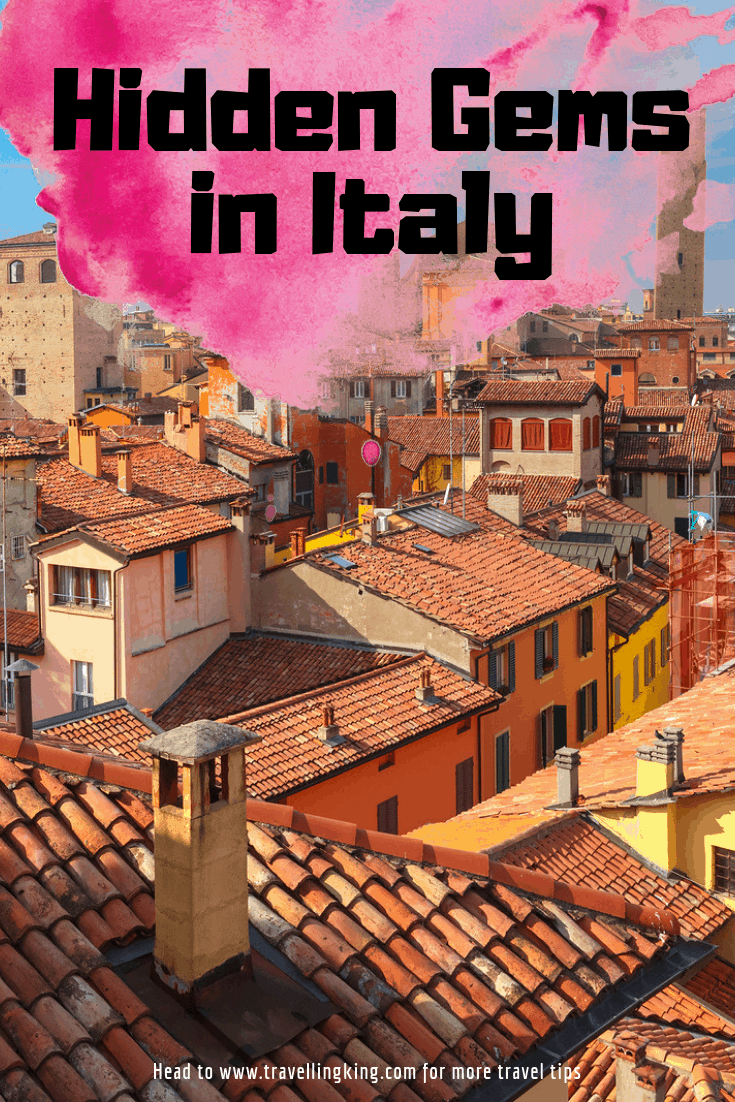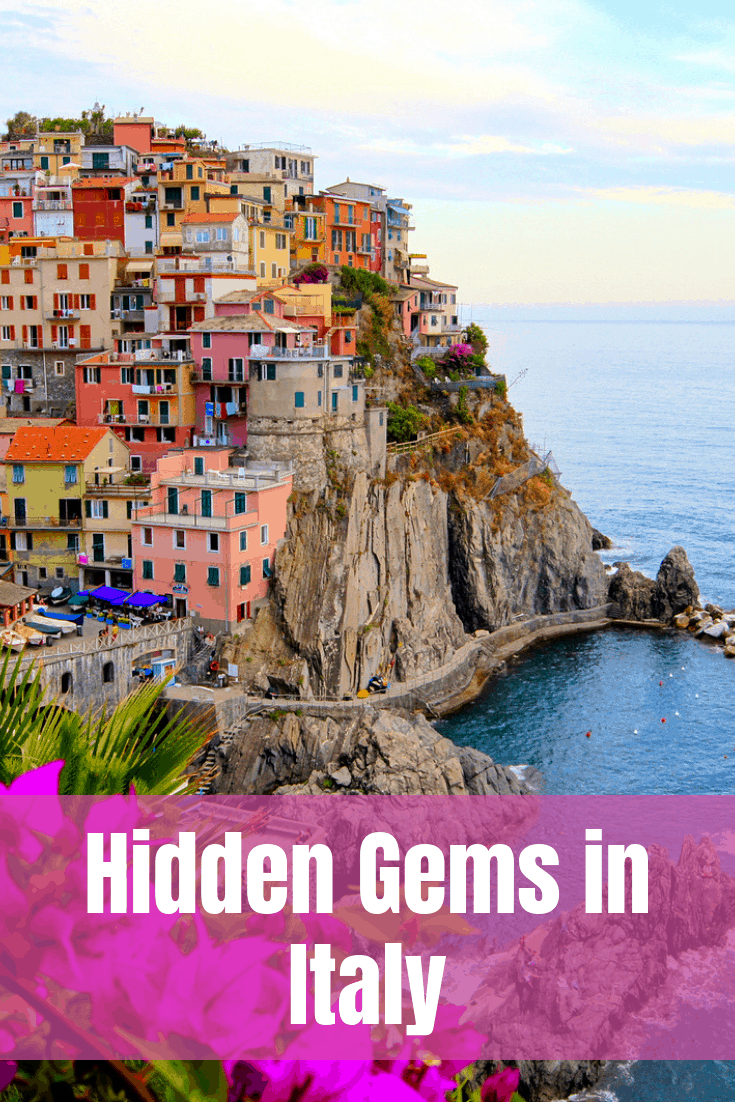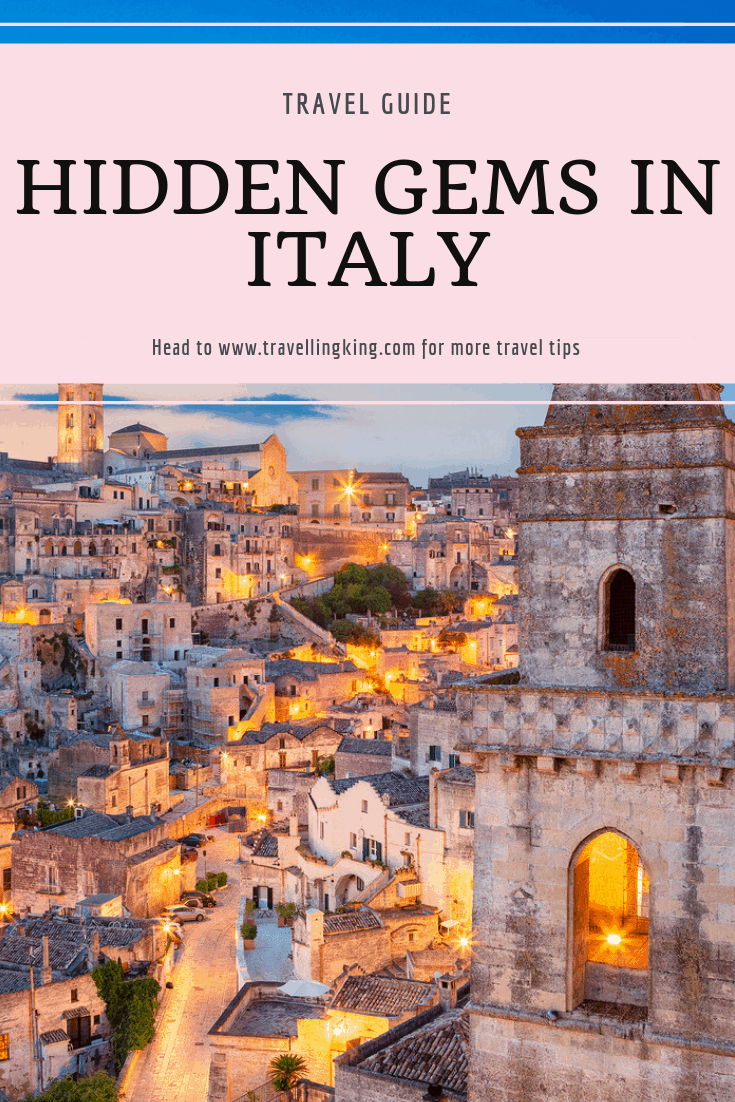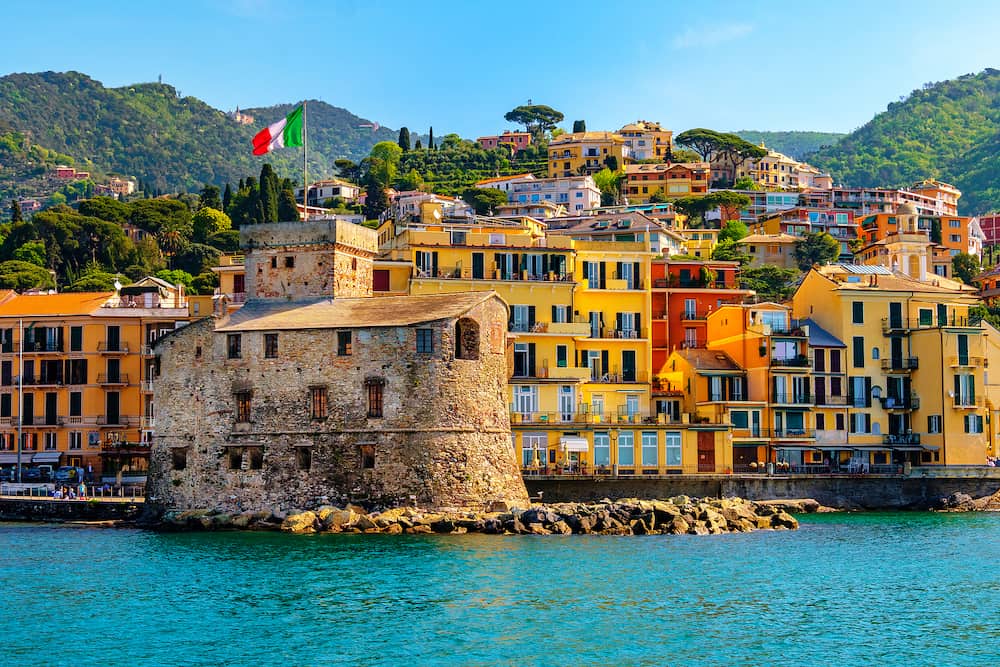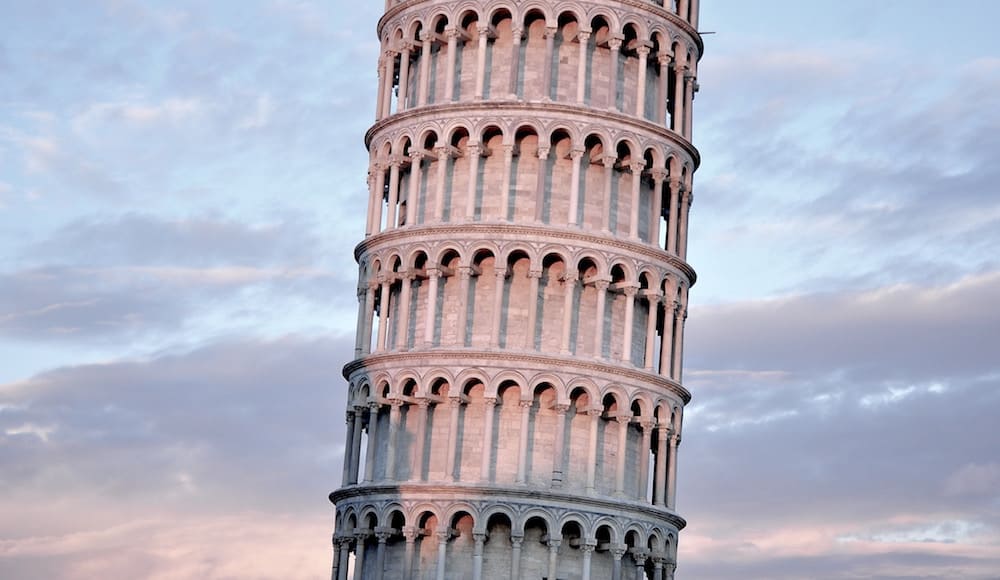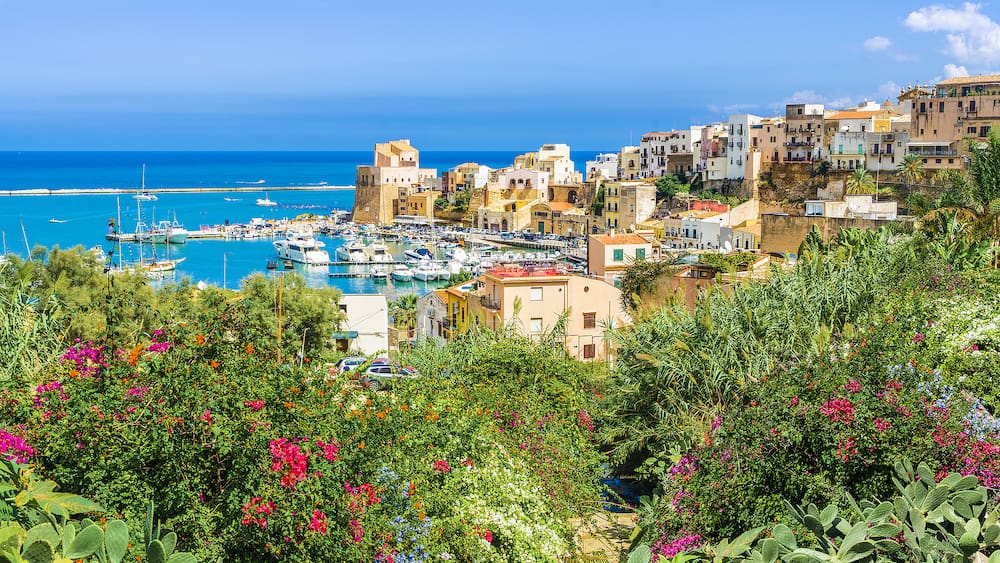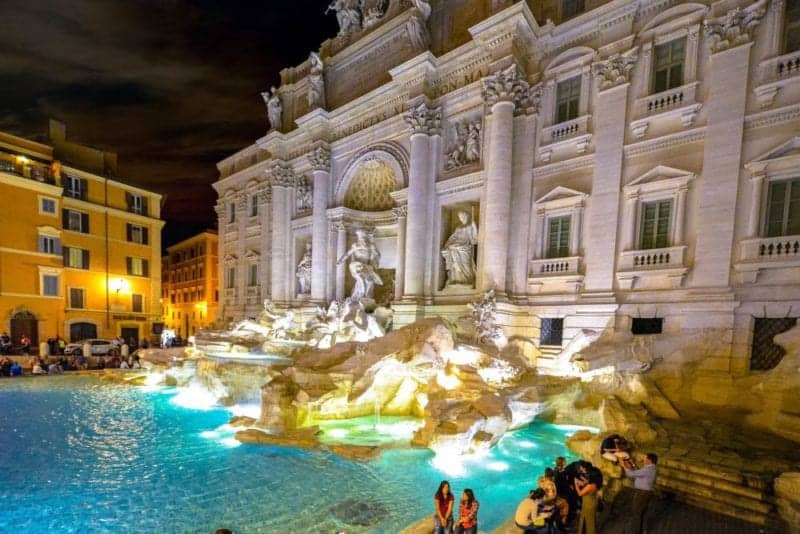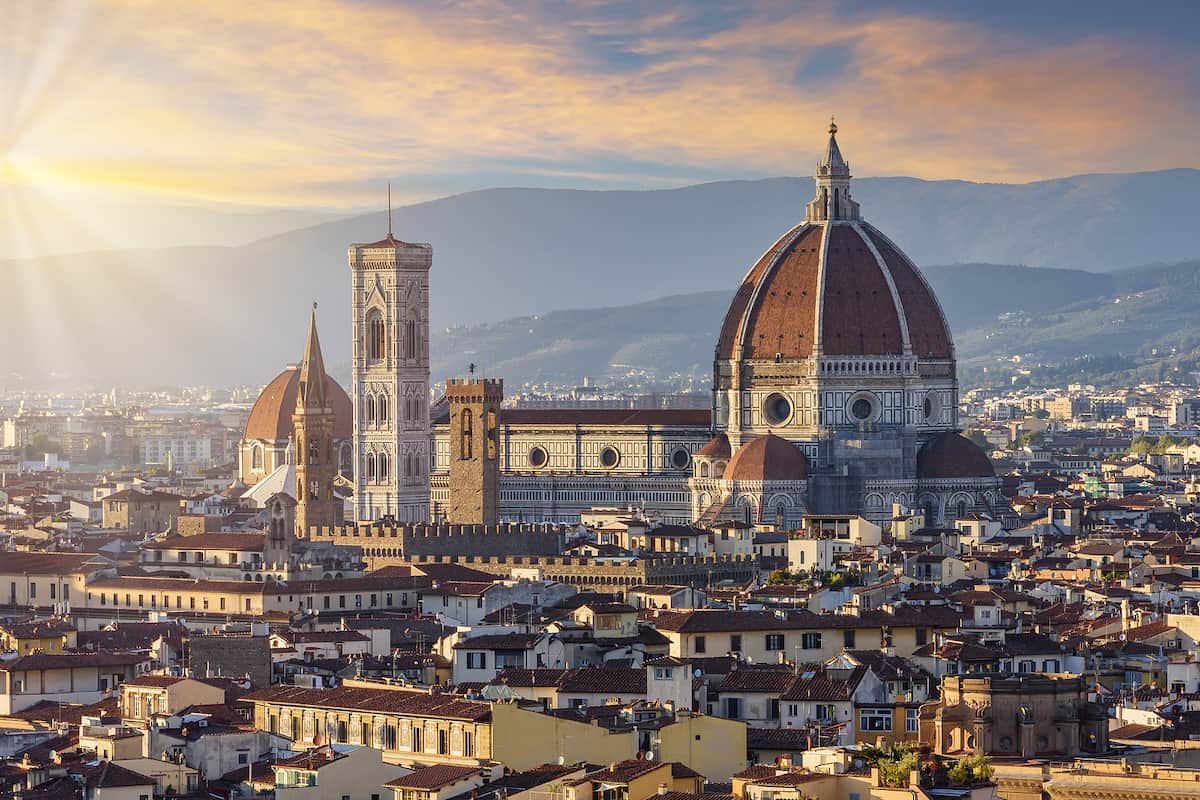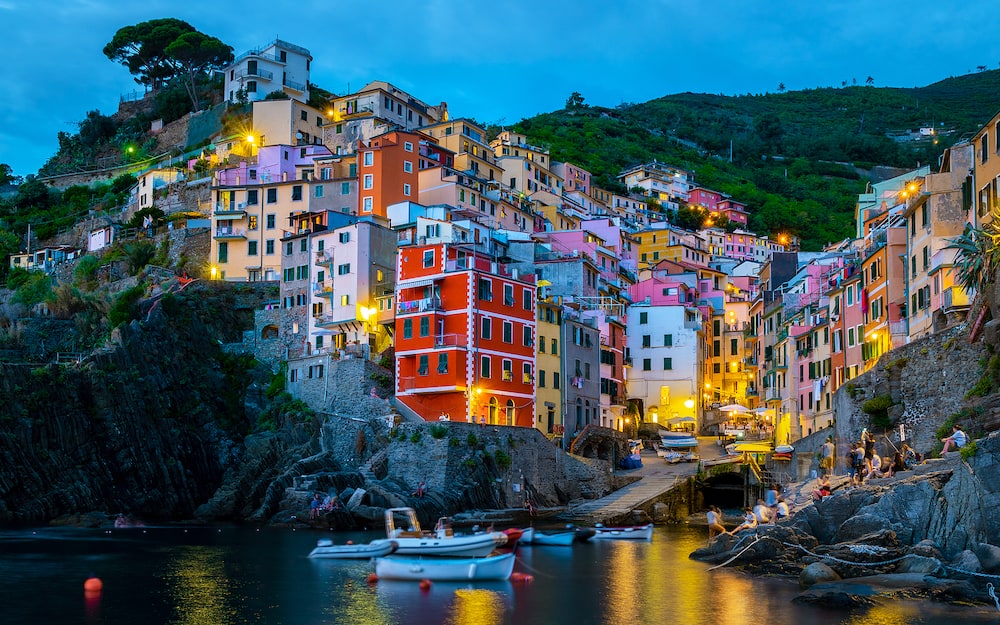Hidden Gems in Italy
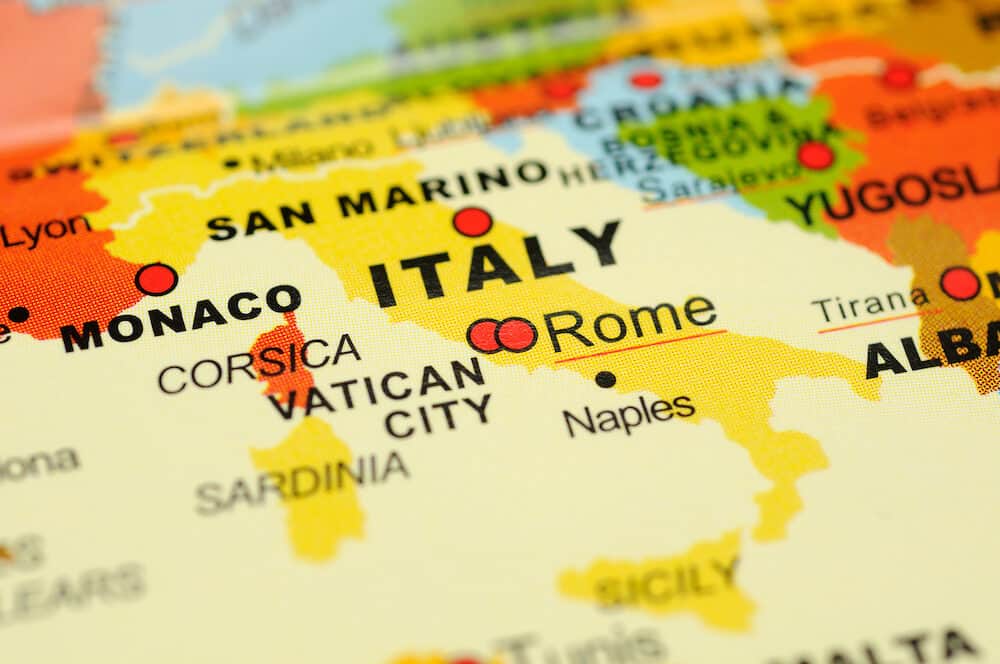
Italy is the fifth most visited country in the world and tourism continues to grow and captivate tourists with its breath-taking ruins, culture and internationally renowned food. When tourists think of Italy, they picture the gondolas of Venice or the iconic Coliseum of Rome, yet Italy is much, much more than Rome, Florence and Venice.
Italy is full of hidden gems if you want to get away from the well-trodden tourist path we will show you how to escape and explore the places that Italians themselves go to on holiday, check out this 10 day Italy itinerary!
From the rolling hills of the Italian countryside in Tuscany, the brilliant turquoise water of the south, we will show you how to have an unforgettable holiday in Italy and travel as Italians do to visit the best-kept secrets of this captivating country.
Plan your trip
Save on fees abroad with the Wise Card—use it at ATMs, restaurants, and for flights or hotels in over 150 countries. Manage 40+ currencies in real-time with the Wise app.
Need Help Planning?
- Cheap Flights: Find the best deals.
- Accommodation: From hostels to luxury stays.
- Car Rental: Affordable options worldwide.
- Sightseeing Tours: Explore without breaking the bank.
- Travel Adapter: One adapter for all your needs.
- Travel Insurance: Don’t risk it—stay covered.
This post includes affiliate links. Read my full disclosure and content policy.
For lovers of the sea
Salento
At the Southernmost tip of Italy is the Salento Peninsula, known for its stunning turquoise seas, excellent olive oil and wine and it’s Greek history.
You can start exploring the province by visiting the main city of Lecce, also known as the Florence of the South and home to Baroque architecture and monuments.
To explore the Italian coastal towns of Salento you can start at Gallipoli. This town was built upon an island and is now connected to the mainland by a bridge. The historic centre is pedestrian and you can wander and get lost in the many alleyways.
Otranto, on the peninsula’s west coast, is another charming coastal town enclosed within medieval walls and whitewashed walls that echo of Grecian seaside towns. Here you can find a gothic castle and an 11th-century cathedral, which is home to a bizarre chapel filled with skulls.
Salento is famous for its excellent beaches and water sports. You can visit Porto Cesareo, which also boasts natural thermal springs. Santa Maria di Leuca is also a favourite for beaches, its promenade lined with upmarket villas and nightclubs.
Salento’s Greek roots still remain and Grecia Salentina is a group of small towns where they still speak Greek and you will find Greek signs all around. The towns are full of whitewashed houses that reflect the brilliant sunlight of the Mediterranean.
How to get to Salento:
By train: Lecce is on the national rail line and is the easiest destination to get to Salento. The many smaller locations on the peninsula can be reached from Lecce using the regional rail line, the private company Ferrovie Sud-Est.
You must check the local train websites to find further connections, as they do not appear on the national rail websites.
It is advisable to take a car to get around the peninsula for more convenience.
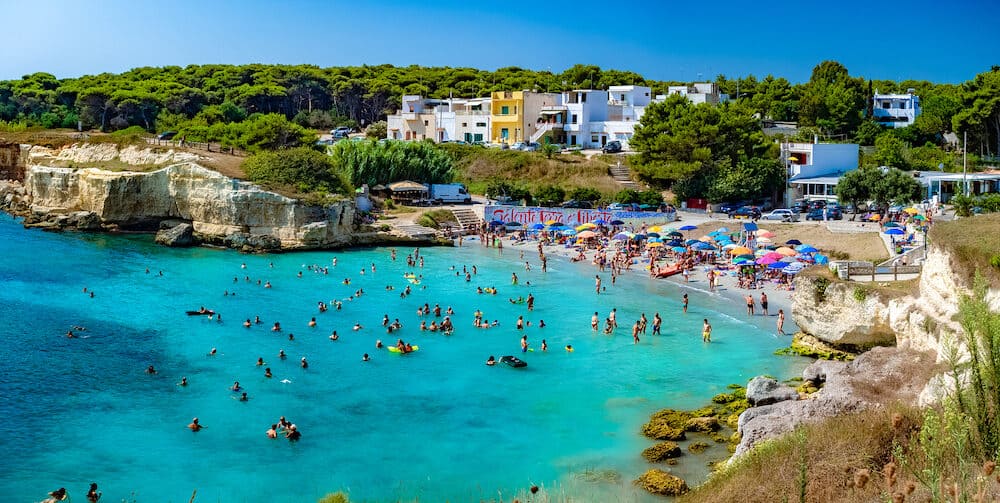
Ischia
One of Naples’ best-kept secrets is the island of Ischia, this volcanic island is home to more than 100 natural thermal springs which have been used by Italians throughout the centuries to revive and heal their bodies and minds.
This stunning destination has wonderful stretches of sandy beaches as well as historic sites, which makes this an ideal place to recharge and re-energise.
The island has an excellent bus service, which means that you don’t need to rent a car here. You can also rent a boat at €100 per day which will allow you to explore some of the more isolated beaches.
At Maronti you will find one of the longest beaches on the island, a 3-kilometre stretch on the edge of the dazzling azure sea.
You can visit the fishing village of Sant’ Angelo and head to the Cavascura thermal baths, the oldest in Ischia. The entrance to the spas cost from around €15.
For those who want to enjoy the incredible views, you can trek up Monte Eponeo, a mountain on the island, which takes around an hour and is ideal for those who love hiking and nature.
How to get to Ischia
By sea: Catch the high-speed ferry from Naples, which takes around an hour one-way. The prices start from €20 per person, one-way.
There is also a slower ferry which takes 1 hour 30 minutes which costs around €12, but for the small difference in price it is best to spend a little more to maximise your time on the island.
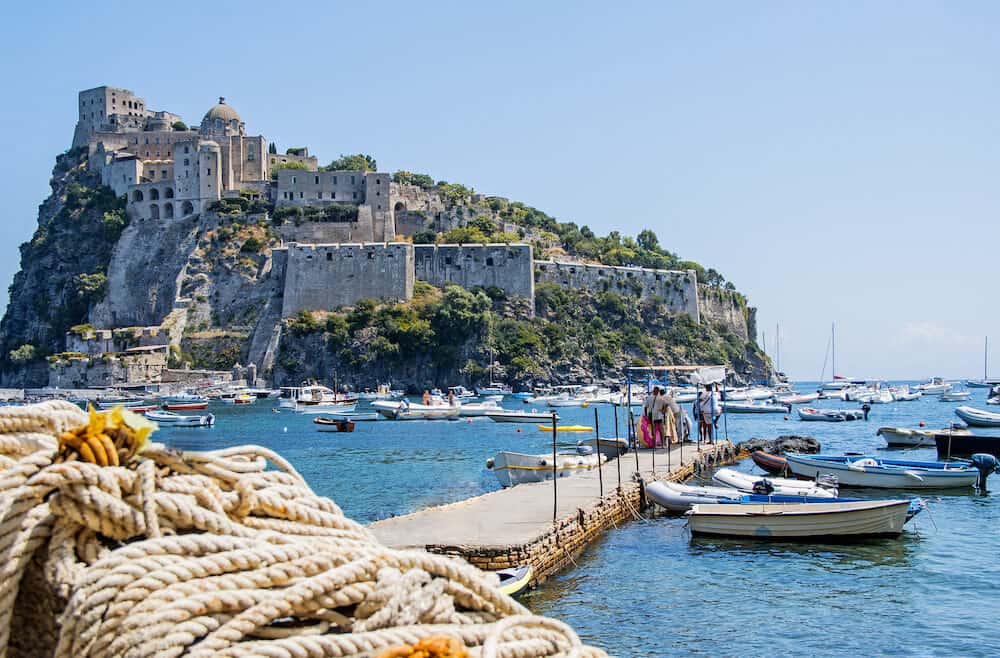
For lovers of adventure
Aeolian Islands
The Aeolian Islands are located in the northeast of Sicily and is another of Italy’s best-kept secrets, here you can swim and dive in the azure sea and even go scuba diving or snorkelling around the rock formations.
The largest island, Lipari, is home to a stunning cliff-top castle where you can catch awe-inspiring views.
In Stromboli you can climb the still active volcano and watch the dramatic molten lava course down the side of the volcano, marking its path to the sea.
Here you can catch awe-inspiring views of the surrounding landscape. In Stromboli you can climb the still active volcano and watch the dramatic molten lava course down the side of the volcano, marking its path down towards the sea.
Recommend tours:
- Aeolian Islands Day Trip from Taormina: Stromboli and Panarea
- Sicily’s Volcanoes Helicopter Tour from Taormina
How to get to the Aeolian Islands:
By air: The nearest airports are Palermo and Catania. From there you will need to take a ferry or hydrofoil to the islands.
By sea: There is a fast ferry from Sicily to the Aeolian Islands that takes around 40 minutes. Three hydrofoil and ferry companies operate frequent trips between the islands.
The hydrofoil is the best option and is operated by Liberty Lines and SIREMAR, the ride costs about €18 one-way. Do remember to check the timetables to avoid taking the very slow ferry, which may take over three hours.
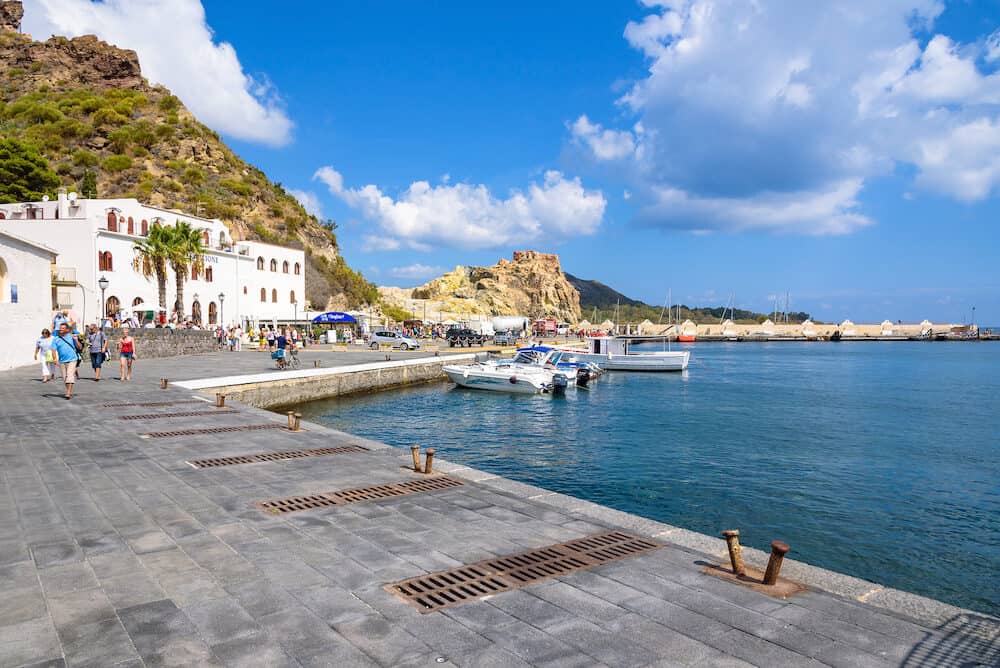
For the history buffs
Matera
Known as “The City of Caves” and “The Stone City”, Matera has grown from an incredibly poor city into a thriving and flourishing tourist destination due to its appearance in the Mel Gibson movie “The Passion of the Christ”.
Listed as a UNESCO World Heritage Site, It is definitely a place to visit whilst in Italy as you can experience life in another era in the city that has been carved into the mountains.
Sassi is the main city and bears a striking resemblance to Jerusalem. Here you will find cave dwellings that you can even stay in an Airbnb has some on offer!
Whilst wandering the streets will leave you feeling like you have gone back in time to the biblical days, there are plenty of things to visit in Matera such as various Rupestrian Churches dating back as early as the 7th century including some spectacular cave churches. One site not to miss is the Complex of Madonna delle Virtu’ e San Nicola dei Greci.
There is also a 13th-century cathedral dedicated to Santa Maria Della Bruna. If you happen to visit on the 2nd of July you can experience a fantastic and vibrant festival, which includes a fireworks show over the city.
Sites to visit include numerous churches where you can see historic and preserved frescoes and several museums. For those who enjoy hiking, Murgia National Park offers various routes and Via Madonna Delle Virtù provides an access point to the route with a hanging bridge that takes you across the river.
Recommended tours:
- Discover Matera Walking Tour
- Guided Tour Sassi di Matera: Sasso Caveoso and Civita
- Italian Hands-on Private Cooking Class in Matera
- Puglia Full-Day Tour: Bari, Trulli of Alberobello, Castel del Monte and Sassi of Matera
- Tour guide Metapontum: Impressive Greek Ruins along the Basilicata’s coast
- Full-Day Tour of Matera
- 3-Day Southern Italy from Rome: Alberobello, Bari, Matera
How to get to Matera:
By bus: Matera can be reached by bus from Rome, Florence, Siena and Pisa with the buses from the Marozzi and Liscio companies. There are numerous buses that connect Matera with almost everywhere in Italy including Bologna, Naples and Milan.
By Train: The most straightforward and quickest route to Bari is by train; it is only a 4-hour train ride from Rome. From Bari you can take the regional trains by searching the website for Ferrovie Appulo Lucane, putting in “Bari Centrale” as your starting point and your destination as “Matera Centrale”.
It will bring up a number of options varying from 1 hour 15 minutes to 1 and a half hours and costing from €2 one-way. From Matera train station it is a short 15-minute walk to Sassi of Matera.
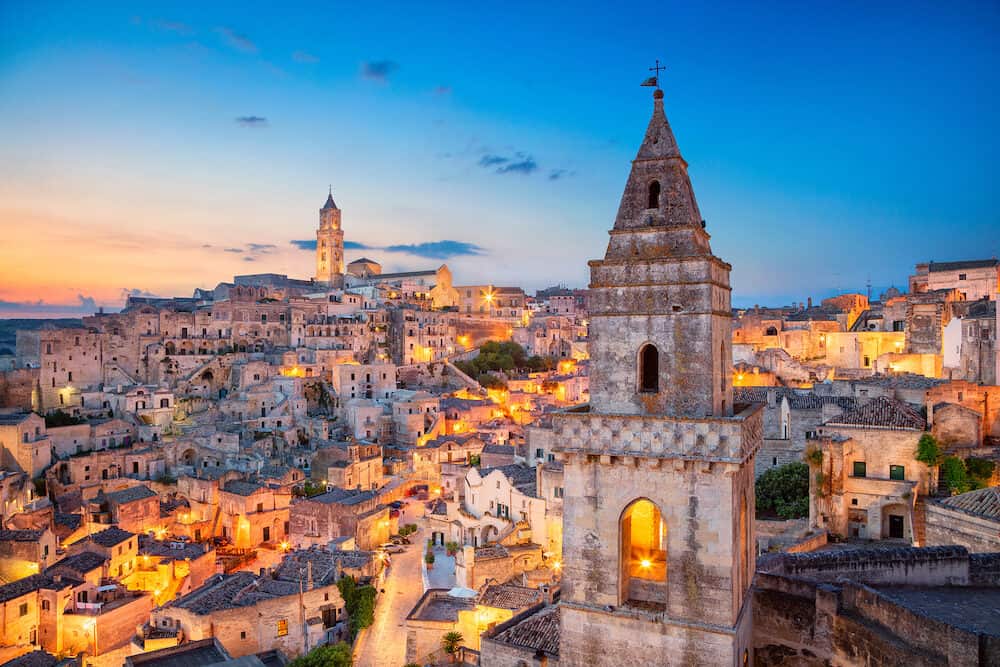
Agrigento
Situated on the South-western shore of Sicily are Agrigento, home of well-preserved Greek temples and the ruins of an ancient city called Akragas located in the Valley of the Temples. Here you can find the temples of Zeus and Hera amongst others and be transported into another era.
The temples line a rocky ridge just south of the historic town centre which can be easily reached on foot from the town, alternatively, there is also a bus that you can take from the railway station. As there are not many restaurants, it is recommended that you bring a picnic with you to enjoy whilst exploring the ruins.
Agrigento is ideal for a day trip when in Sicily, and is easily reached from Catania, Siracusa, Palermo and Caltanissetta. As there are plenty of things to see in a day and it’s a little bit remote, it is advisable for visitors to stay overnight in the town or nearby.
Recommended tours:
- 2-hour Private Valley of the Temples Tour in Agrigento
- Private Tour to Piazza Armerina and Agrigento – with Local Guide
- Valley of the Temples and Villa Romana del Casale Day Trip from Taormina
- 5-Day Eastern Sicily Tour from Palermo to Taormina: Mt Etna, Syracuse and Agrigento (very affordable)
- Agrigento and Valley of the Temples Day Trip from Palermo
- Cooking Class at a Modern Art Museum in Agrigento
How to get to Agrigento:
By bus: There are bus services to Agrigento from Catania, Siracusa, Palermo and Caltanissetta.
By train: Trains to and from Palermo take just over two hours and run approximately every hour. Check the train timetables as some of the trains are slow and take much longer. Trains from Catania take over three hours and you may need to change trains.
All trains stop at the Stazione Centrale, near Piazza Marconi.
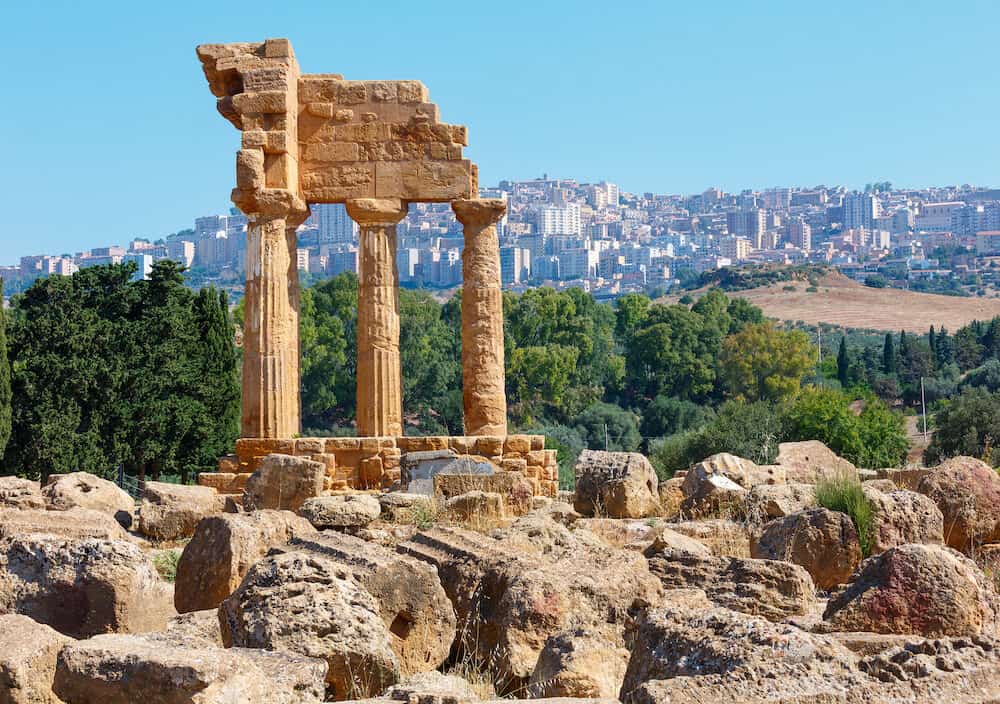
For lovers of nature
Cinque Terre
The Italian Riviera of Cinque Terre is in the region of Liguria and the Cinque Terre refers to five small towns perched atop the cliffs with views onto the brilliant turquoise of the Mediterranean Sea. This is a nature lover’s dream and there are plenty of excellent hikes as the towns are only accessible by train or an old mule path.
The five villages in the name are made up of: Riomaggiore where a steep ravine leads down to a small harbour and the town at sunset provides the most romantic tableau with the pastel glow of colourful buildings lit by the waning sun; Manarola, which produces the famous Cinque Terre wine called Sciacchetrà.
Corniglia is also surrounded by vineyards and sits atop a 100-metre high cliff; Vernazza is another charming village where narrow lanes lead almost vertically down to the sea; and Monterosso, the only village with a strip of beach and is filled in summer with Italian tourists trying to get a tan.
This village is famed for numerous lemon trees and delicious freshly-caught anchovies which you can enjoy at many of the coastal restaurants of the region.
Cinque Terre is a fantastic destination for hikes and there are several famous ones including the Sentiero Azzuro, known as the Blue Trail, which is a 12km mule path offering spectacular scenery and can take up to two hours.
There are varying routes that you can take for different distances and difficulty levels. There is also a Trail to Manarola, which is a gentler route but has over 600 steps.
Finally experienced walkers will enjoy the legendary Sentiero Rosso trail which takes between 9 and 12 hours to complete and is a 35 km route which forms an arc above the villages of Cinque Terre.
Recommended tours:
- Cinque Terre Hiking Day Trip from Florence
- Pisa and Cinque Terre Day Trip from Florence by Train
- Private Cinque Terre Trekking Tours
- Cinque Terre Pesto Making Class, Boat Tour and Lunch from La Spezia
- Cinque Terre Kayaking Trip from Monterosso
- Cinque Terre and Portovenere from Florence in One Day
- Cinque Terre Wine Tour in Riomaggiore and Hiking Through the Vineyards
- Cinque Terre Day Trip from Milan With Hotel Pickup
How to get to Cinque Terre
By train: There are direct train connections to all five of the villages from the main cities of Genoa, Pisa and Rome. There is a Cinque Terre Pass, which covers all transport in the area between Levanto and La Spezia and also includes hiking fees as well for a tiny €13.50 per person including the train costs! You can find out more at parconazionale5terre.it.
By car: You can reach the villages by car but the winding cliff drives can be hair-raising. It is recommended to leave the car at La Spezia at the parking facilities of the train station and take a train to travel between the villages.
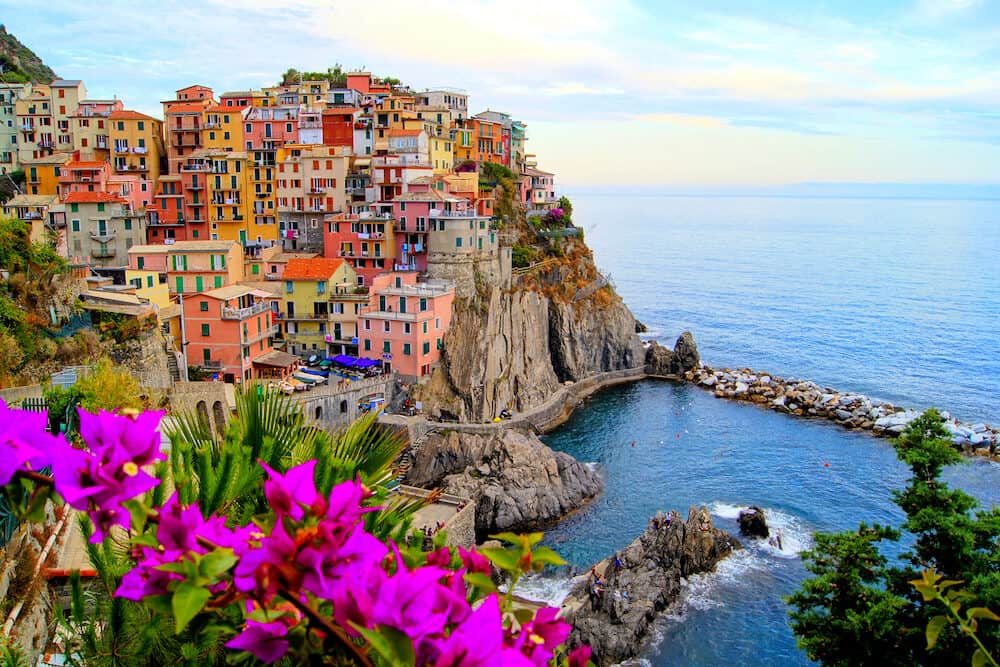
For foodies and gourmands
Bologna
Visit the “Food Capital” of Italy, Bologna, a city rich with history and dotted with medieval palaces and towers. Here you can savour some of Italy’s best and the combination of great food culture and history will be enough to make your head spin!
You can find hundreds of artisanal shops selling products such as Tortellini (pork stuffed tiny pasta parcels), Mortadella (delicious cured pork sausage), world-renowned wedges of Parmesan cheese, and balsamic vinegar among the delicacies on offer.
Here you must try the Ragù or Bolognese sauce, named after this very region. The best thing about Bologna is that it is home to casual dining with great prices.
Most trattorias have a relaxed ambience and also sell selections of pasta and meat. If you want to take in everything at once you can drop into the Mercato di Mezzo food hall in the centre.
Wandering through the streets you can see the remnants of medieval street names such as Via Delle Pescherie Vecchie which means “Street of the Old Fish Mongers” in Englsih and Vicolo dei Ranocchi, the curiously named “Alley of the Frogs”.
Aside from the food scene, Italian people love aperitivos and here you can head to a bar, order a drink and enjoy little bites with a glass of Prosecco or red wine.
Eat like a local by heading to the hidden restaurant Pigro Mortadelleria just off Piazza Maggiore to sample their “panino mortazza” or mortadella sandwich that pairs perfectly with a glass of bubbly Franciacorta. This place sources the mortadella from the city’s last artisanal producer, Pasquini.
To travel back in time explore Da Bertino, an eatery that still maintains its vibe from the ‘70s and offers delicious carts of meat known as “al carello” with sides of vegetables and potatoes.
Alternatively, for thrifty foodies, head to E’ Cucina Leopardi where fixed price menus start at €10 and you can have an authentic meal with three courses for only €20 per person.
Recommended tours:
- Italian Food and Museo Ferrari Small Group Tour from Bologna Including Gourmet Lunch
- Bologna Food Experience: Factory Visits with Gourmet Lunch and Wine Tasting
- Bologna Food Walking Tour
- Small-Group Italian Food and Wine Tour with Gourmet Lunch from Bologna
- Ferrari, Pagani and Lamborghini Tour from Bologna
- 2-Hour Historic Bike Tour of Bologna
- Cooking Class in Bologna’s Countryside
- Vespa Rental in Bologna
How to get to Bologna:
By air: The closest airports to Bologna are the Marconi Airport or Forlì Airport (a little bit further out from the city centre) with Ryanair. From Marconi Airport the Aerobus takes just 20 minutes and costs €5, stopping at the main Bologna train station.
From Forlì Airport the bus takes around an hour, costing around €10. This bus also stops at Bologna bus station, just two minutes walk from the nearby train station. From the station, you can walk to the centre in just 10 minutes or take a short taxi ride.
By train: By train, it takes around 2 hours and 17 minutes to get to Bologna. The high-speed train takes only 1 hour and 54 minutes. Prices start from around €18.90, and you can find offers on the train website.
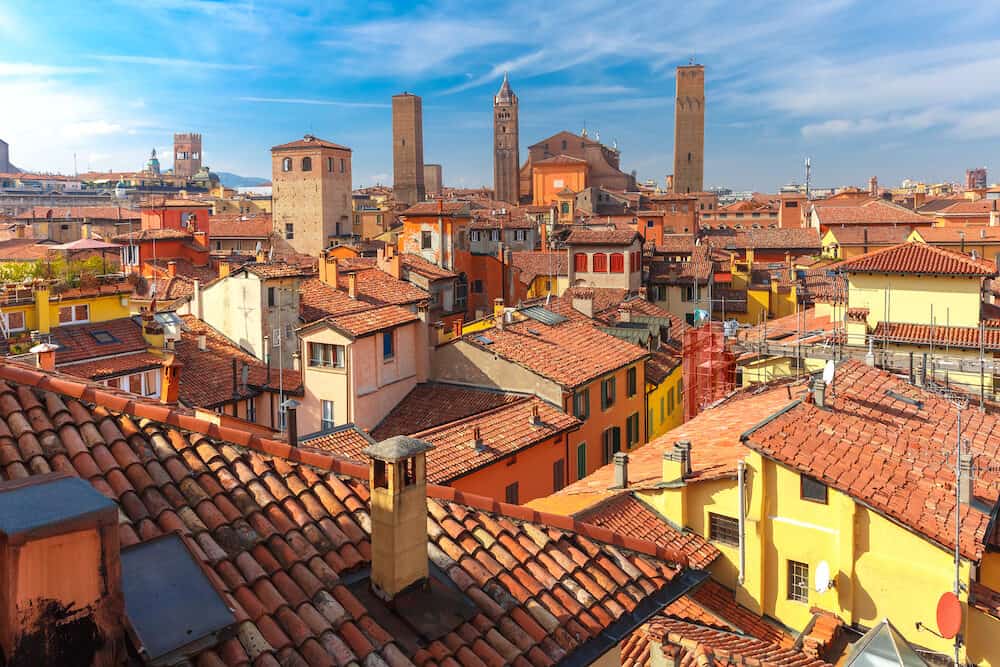
Umbria
One of Italy’s hidden gems for foodies is the Umbria region, home of Jazz and amazing food culture as well as the world-famous Baci chocolate, artisanal prosciutto and salami.
Known as the “Green Heart” of Italy, the medieval towns of Umbria are closely tied to their artistic and agricultural heritage and there is much for foodies to rejoice in and discover in Umbria.
Most of Umbria’s produce carries the D.O.P label certifying that the products are produced in a specific place according to traditional methods of preparation; this makes Umbria a paradise for gourmands.
The most famous produce includes truffles, excellent cheese, salamis and meats and wine and you can time your visits for the autumn to coincide with harvest time and local food festivals to enjoy the best that Umbria has to offer.
The vendemmia, or wine harvest season in English, is the time for wine lovers to visit the medieval towns and villages of the region, some must-see places include Montefalco and Bevagna, here you can stop at local vineyards to sample their delicious wines.
Some vineyards that you can visit include the famous Arnaldo Caprai and Cantina Scacciadiavoli vineyards where you can savour the robust wine from the region named Sagrantino or try the Montefalco Rosso red wines.
Strada dei Vini Etrusco Romana is a wine-tasting route which leads to Narni from Orvieto, which is dotted all along with local vineyards, here you can visit the local vineyards producing Orvieto white wine, and Rosso Orvietano wines and enjoy some tasting sessions of the best local wines.
The olive oil harvest festival is held for four weekends in November and is called Frantoi Aperti, during this time the olive presses are open and you can visit them to see how olive oil is processed as well as participate in olive picking walks, food tastings and cooking classes.
From mid-October, the highly prized Tartufo Nero Pregiato di Norcia makes its appearance in Norcia, Umbria and in November, Tartufo Bianco is collected in the Italian countryside, gathered by farmers using pigs to uncover these expensive gourmet truffles. There are even annual truffle festivals held in the region where you can purchase this Italian delicacy.
Best of all, Umbria makes a fantastic day trip from Rome or Florence, being under 2 hours by train from either city which makes this an unmissable foodie destination for autumn!
Recommended tours:
- Small Group Tour of Assisi
- Assisi Private Walking Tour
- Orvieto and Civita di Bagnoregio from Rome with Quality Electric-assist Bicycle
- Extra Virgin Olive Oil Tour with Lunch in Umbria
- Winemaker for a Day: Tour an Organic Winery
- Wine Tasting and Tour of The Most Beautiful Cellar in the World
- Perugia Private Walking Tour
How to get to Umbria:
By air: Umbria’s regional airport, Aeroporto Internazionale dell’Umbria, is also known as “San Francesco d’Assisi” airport (airport.umbria.it) are the most direct airports to fly into if you are visiting Umbria.
Low-cost carriers such as Ryanair offer flights there. You can also take a domestic flight from Catania in Sicily to Umbria.
By train: Orvieto is a destination on the Rome-Florence national rail line, from there you take the Rome-Ancona train line to reach Spoleto, Narni and Trevi, changing at Foligno to provide further connections to Perugia.
The private and regional local train line, Ferrovie Centrale Umbra (umbriamobilita.it), offer scenic train routes that run from Terni to Sansepolcro, which you can take to visit the towns of Umbria: Città di Castello, Todi, Perugia and Umbertide.
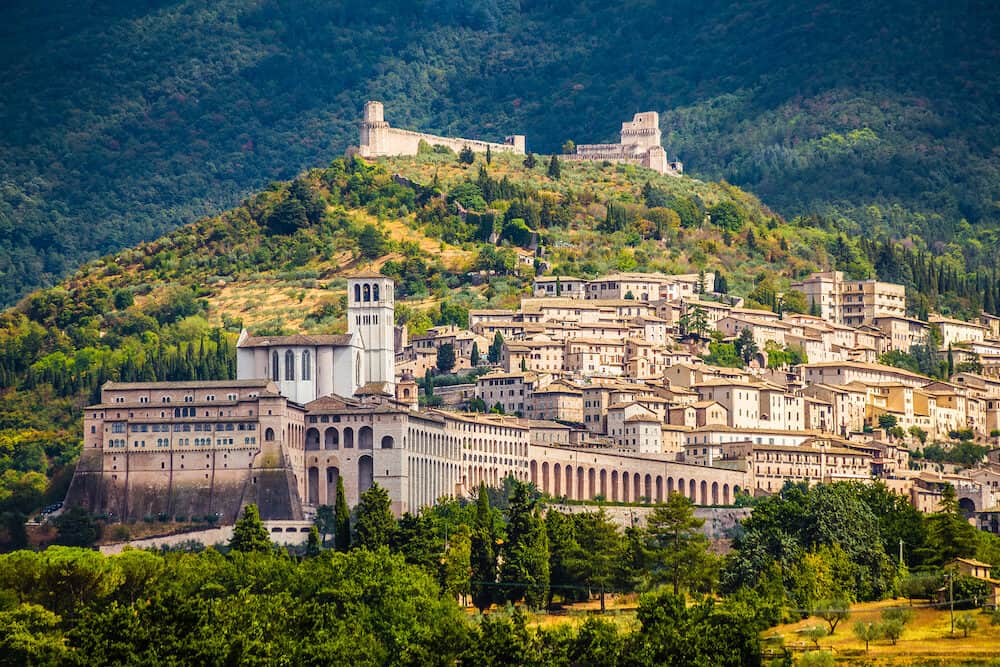
If you’d like to save it for later, please save it to Pinterest.
